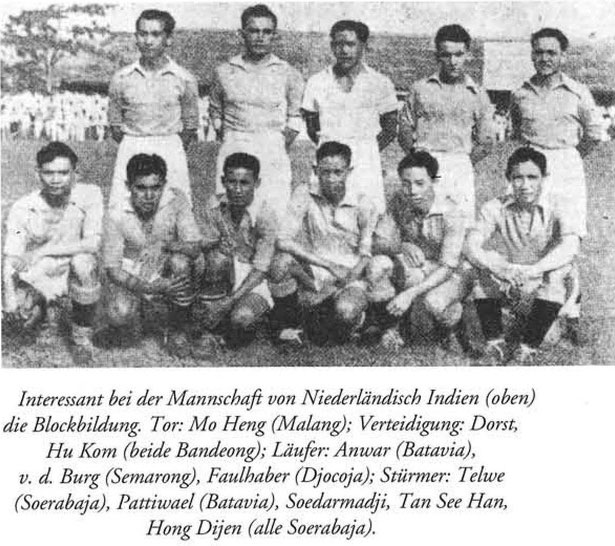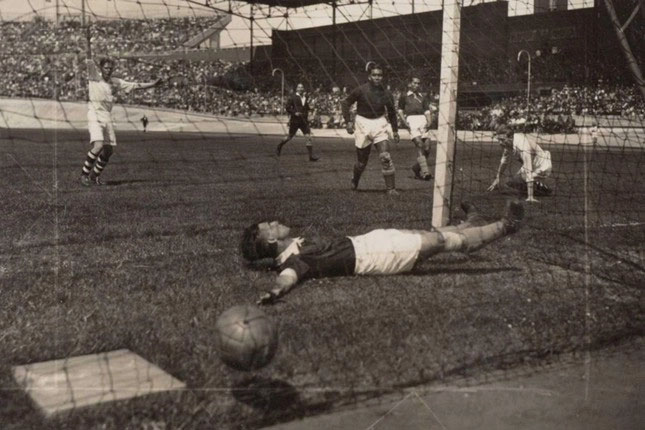The World Cup has long been a challenging dream for Southeast Asian countries, but few know that 84 years ago, at the World Cup held in France, a representative from a region often considered a footballing underdog made an appearance.
World Cup 1938 was the third edition of the FIFA World Cup. After the first two tournaments featured only European and South American nations, the organizers aimed to include teams from other continents. Besides the host country France and the reigning champions Italy, Europe was allocated 11 spots, while South America had 2. The final spot was reserved for an Asian representative.

84 years ago, a representative from a region considered a footballing underdog made an appearance.
At that time, Indonesia was a colony of the Netherlands, known as the Dutch East Indies. With support from the mother country, the Dutch East Indies was selected to participate in the qualifiers and faced Japan. However, the outbreak of the Second Sino-Japanese War led Japan to withdraw. FIFA did not want the Dutch East Indies to qualify without playing a match, so they arranged for them to play a game against the United States in Rotterdam, Netherlands. The Americans did not show up, and thus the Dutch East Indies automatically qualified for the World Cup in 1938.
That year, the World Cup was played in a knockout format, with 8 teams advancing to the quarter-finals. The Dutch East Indies faced Hungary. In Reims, 10,000 local spectators were present to witness the first Asian team compete in the World Cup. However, when the Dutch East Indies took the field, everyone mistakenly thought they were the Netherlands. They wore orange jerseys like their mother country and even sang the Dutch national anthem before the match began.

The lineup of the Dutch East Indies team at the World Cup 1938.
An interesting detail is that the two captains of the Dutch East Indies and Hungary, Achmad Nawir and Gyorgi Sarosi, were both doctors. They both had an intellectual appearance with glasses and slicked-back hair. It wasn’t until 60 years later that a player was allowed to wear glasses in the World Cup, namely Edgar Davids, who suffered from glaucoma.
At that time, Hungary was not yet the super team of Ferenc Puskas that it would become in the 1950s, but it was still a formidable opponent. Just 13 minutes into the match, the Dutch East Indies conceded their first goal. Two minutes later, the score was doubled. By the end of the first half, Hungary led 4-0. In the second half, they “only” scored 2 more goals, completing a resounding 6-0 victory.
This result meant that the Dutch East Indies would head home immediately after, setting a record that has yet to be broken: the only team eliminated from the World Cup after just one match. However, the players from the Dutch East Indies had nothing to be ashamed of. Firstly, Hungary was too strong. This team defeated the host nation France 3-1 in the quarter-finals, eliminated Brazil in the semi-finals (winning 2-1), and only lost to Italy 2-4 in the final.
 The Dutch East Indies were easily overwhelmed by Hungary in their first match.
The Dutch East Indies were easily overwhelmed by Hungary in their first match.
Secondly, the Dutch East Indies team was hastily formed, consisting of amateur players who were both small in stature (averaging only 55 kg) and not well-versed in football tactics.
Nonetheless, this was a remarkable experience for the young men from Southeast Asia. After leaving the World Cup, they also stopped by the Netherlands, playing 3 friendly matches with clubs (winning 1, losing 2), and then played a final match against the Netherlands national team, which was also eliminated in the first round of the World Cup. In many tales that uplift the national spirit in Indonesia, the colonial team of the Dutch East Indies is said to have defeated the mother country at the Olympic Stadium in Amsterdam, a slap in the face to the colonizers. In reality, they lost 2-9.
Indonesia declared its independence in 1945, but the connection with the Netherlands remained. Giovanni van Bronckhorst, the captain of the Netherlands in the 2010 World Cup, has both a father and mother from Indonesia, making him the first person of Asian descent to captain a team in a World Cup final. At the 2022 World Cup, Pascal Struijk, a defender with Indonesian roots, was included in the preliminary squad of the Netherlands national team. His grandparents were from the Dutch East Indies before settling in the mother country.
World Cup 1938
|

















































